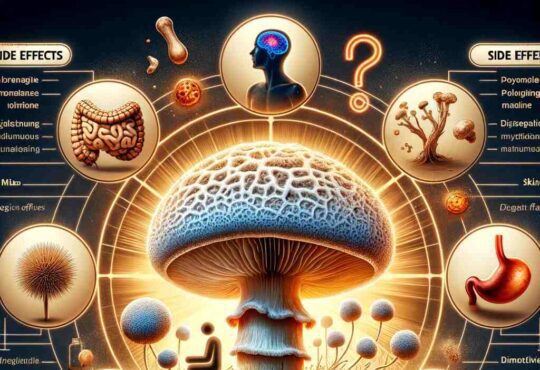Breathing Life into Lung Fissures: Understanding the Complexities of Lung Fissures and Their Impact on Health
Table of Contents
Introduction
Lung fissures play a vital role in our respiratory health, yet their complexity often goes unnoticed. In this article, we will delve into the intricacies of lung fissures and explore their significance in maintaining optimal lung function.
Anatomy of the Lungs
Before diving into the realm of lung fissures, it is crucial to comprehend the structure and function of the lungs. These incredible organs consist of various components that work together seamlessly to ensure efficient respiration. The lungs are paired organs located within the thoracic cavity. Divided by the mediastinum, each lung is enclosed in a delicate double-layered membrane called the pleura. The bronchial tree, composed of intricate air passages, extends into the lungs, facilitating the exchange of oxygen and carbon dioxide between the alveoli and bloodstream. Accompanied by blood vessels and lymphatics, the lungs ensure the delivery of oxygen and removal of waste products from our body.
What are Lung Fissures?
Lung fissures, also known as interlobar fissures, are thin, natural divisions within the lungs. These fissures separate different lobes, enhancing the functionality and efficiency of respiratory processes. Lung fissures serve as borders between lung lobes, allowing each lobe to function independently. They provide structural stability and prevent excessive movement between the lobes during respiration. These divisions also guide airflow, ensuring that gases are evenly distributed within the lungs for efficient oxygenation.
Importance of Lung Fissures in Respiratory Health
While often overlooked, fissures play a crucial role in optimizing lung function and overall respiratory health. By separating the lobes, lung fissures enhance ventilation, allowing each lobe to inflate and deflate independently during breathing. Efficient oxygenation is facilitated by lung fissures, as they ensure the uniform distribution of inhaled air throughout the lungs. Their presence enhances gas exchange, allowing for effective elimination of carbon dioxide and absorption of oxygen.
Formation and Development of Fissures
Fissures begin to form during embryonic development and are influenced by various factors as the lungs grow. During early fetal development, lung buds form, gradually evolving into distinct lobes connected by fissures. Genetic and environmental factors play a role in determining the number, size, and location of lung fissures in individuals. While the precise mechanisms of fissure formation are still being studied, it is believed that intricate signaling pathways guide their development.
Role of Fissures in Disease Diagnosis
Fissures hold diagnostic significance in pulmonary conditions, aiding in the identification and assessment of various diseases. Radiological interpretation of fissures enables healthcare professionals to identify abnormalities such as tumors, infections, and fibrotic changes. The presence or absence of fissures can be indicative of certain lung diseases, providing valuable clues for accurate diagnosis. CT scans and other imaging modalities assist in visualizing lung fissures, allowing for detailed examination and detection of potential disease-related changes.


Lung Fissures and Their Relation to Lung Cancer
Understanding the association between fissures and lung cancer is essential in the diagnosis, staging, and treatment of this prevalent disease.
- Fissures serve as natural boundaries, guiding the spread of cancerous cells within the lungs. By evaluating the involvement of fissures, healthcare providers can determine the extent of cancer and appropriate treatment options. Accurate identification of fissure involvement aids in planning surgical interventions, ensuring the removal of cancerous cells while preserving healthy lung tissue.
Respiratory Disorders Linked to Lung Fissures
Abnormalities or disorders of lung fissures can give rise to various respiratory conditions, impacting lung health. Pneumothorax, the accumulation of air between the lung and chest wall, can occur when a fissure is damaged or ruptured. Atelectasis, the collapse of lung tissue, can result from the obstruction of a bronchus or injury to a lung fissure. Understanding these complications enables healthcare professionals to provide timely interventions and prevent further respiratory compromise.
Surgical Considerations with Fissures
In surgical procedures involving the lungs, preserving the integrity of lung fissures is vital to ensure optimal outcomes. Lobectomy, the removal of a lung lobe, often requires precise dissection along the lung fissures to separate the affected lobe from the healthy lung tissue. Segmentectomy, the removal of a specific segment within a lobe, also relies on preserving the integrity of fissures to safeguard the remaining lung tissue. Surgeons employ meticulous techniques to minimize damage to fissures and maintain the functionality of the respiratory system.
Challenges in Assessing Lung Fissures
While essential for respiratory evaluation, assessing lung fissures is not without limitations and difficulties. The intricate nature of fissures makes them challenging to identify accurately on imaging studies, leading to potential diagnostic errors. Overlapping structures and variations in anatomy can further complicate the visualization and interpretation of fissures. Advanced imaging tools and technologies are continuously being developed to aid in overcoming these challenges and provide more precise and detailed assessment.
Emerging Research on Lung Fissures
Ongoing studies and recent discoveries in the field of fissures have shed light on their complex nature and potential implications in respiratory health. Researchers are exploring the genetic and molecular factors influencing lung fissure development, aiming to understand the mechanisms behind their formation fully. The role of lung fissures in lung diseases such as chronic obstructive pulmonary disease (COPD) and idiopathic pulmonary fibrosis (IPF) is being investigated to improve diagnostic accuracy and develop targeted therapies. Emerging research offers hope for advancements in both understanding fissures and improving treatment approaches for respiratory conditions.
Role of Imaging
Technologies in Evaluating Lung Fissures
Various imaging modalities have revolutionized the assessment of fissures, enabling detailed evaluation and visualization. CT scans, with their high-resolution capabilities, provide three-dimensional images that offer valuable insights into fissures’ anatomy and any associated pathological changes. MRI, which utilizes magnetic fields and radio waves, can provide detailed images without exposing patients to ionizing radiation. Advancements in imaging techniques, such as virtual bronchoscopy and dual-energy CT, continue to enhance our ability to assess fissures accurately and identify potential abnormalities.
Maintaining Lung Health through Fissure Care
To optimize lung health, it is essential to prioritize proper care and maintenance of fissures.
- Adopting a healthy lifestyle, including regular exercise, a balanced diet, and avoiding exposure to pollutants, can contribute to improved lung function and overall respiratory well-being.
- Preventive measures, such as receiving vaccinations and practicing good respiratory hygiene, help reduce the risk of respiratory infections and subsequent damage to lung fissures.
- By promoting self-care and fostering a nurturing environment, individuals can play an active role in preserving their lung health and supporting the integrity of fissures.


Impact of Aging on Lung Fissures
As we age, changes occur in fissures that can affect overall respiratory function and health.
- Aging results in a natural reduction in lung elasticity, potentially leading to alterations in the structure and flexibility of fissures.
- These changes can contribute to decreased lung capacity and an increased susceptibility to respiratory diseases.
- Regular monitoring of lung health and adopting measures to maintain fissure integrity become increasingly crucial as we age.
Genetic Factors and Lung Fissures
Genetic predispositions can significantly influence the formation and structure of lung fissures, potentially impacting respiratory health.
- Variations in specific genes involved in lung development can affect the formation and location of fissures.
- Genetic factors also influence the susceptibility to respiratory diseases and the severity of associated symptoms.
- Further research into the genetic determinants of lung fissures holds the potential for personalized interventions and improved management of respiratory conditions.
Lifestyle Factors Affecting Lung Fissures
Unhealthy lifestyle choices, such as smoking, exposure to pollution, and occupational hazards, can have detrimental effects on fissures. Smoking is a major risk factor for lung diseases and can accelerate the deterioration of fissures. Prolonged exposure to pollutants, both indoors and outdoors, can lead to inflammation and damage to lung tissues, potentially affecting fissure integrity. Occupational hazards, such as exposure to asbestos or certain chemicals, can contribute to the development of lung diseases and compromise fissure function. Implementing lifestyle modifications, such as quitting smoking and minimizing exposure to environmental pollutants, can help preserve lung health and maintain the integrity of fissures.


Maintaining Lung Integrity after Lung Injury
In instances of lung injury, prioritizing rehabilitation and providing appropriate care is crucial for the recovery of damaged fissures. Rehabilitation strategies, including pulmonary physical therapy and breathing exercises, can aid in the restoration of lung function and maximize fissure integrity. Post-injury care focuses on minimizing the risk of complications, such as infections or further lung damage, and promoting healing and regeneration. Treatment options, such as surgical interventions or targeted therapies, may be considered based on the extent and nature of the lung injury, aiming to maintain or restore lung fissure integrity.
Summary and Key Takeaways
Lung fissure play a significant role in maintaining optimal respiratory health, enhancing lung function, and aiding in disease diagnosis and treatment. Understanding their structure, function, and potential complications allows for a comprehensive approach to lung care.
Frequently Asked Questions (FAQs)
What are lung fissure?
Lung fissure are thin divisions within the lungs that separate different lobes, guiding airflow and enhancing ventilation.
What is the importance of lung fissure in respiratory health?
Lung fissure optimize lung function, ensuring efficient oxygenation, and facilitating gas exchange within the lungs.
Can lung fissure be visualized on imaging studies?
- Yes, advanced imaging modalities like CT scans and MRI enable accurate visualization and assessment of lung fissure.
How do lung fissure relate to lung cancer?
Lung fissure guide the spread of cancerous cells within the lungs and aid in staging and planning treatment for lung cancer.
Conclusion
Breathing life into lung fissures reveals their critical role in maintaining respiratory health. Understanding the complexities and impact of lung fissures empowers individuals to make informed choices that prioritize lung care and overall well-being. By nurturing our lung fissures, we pave the way for a healthier and more fulfilling life.






